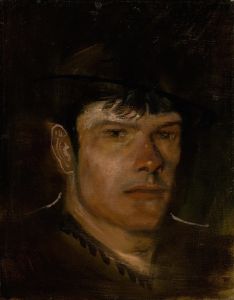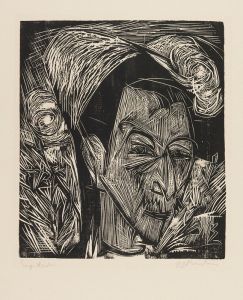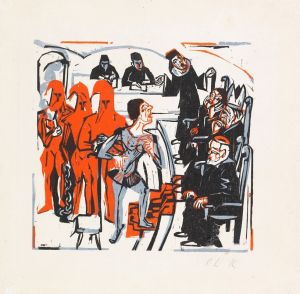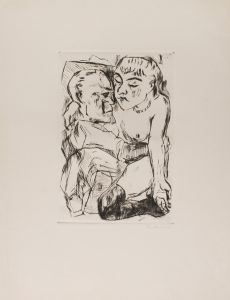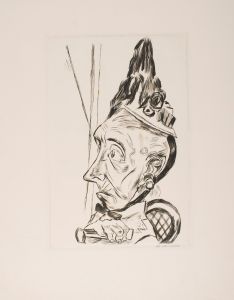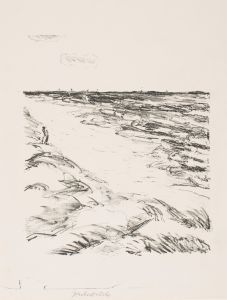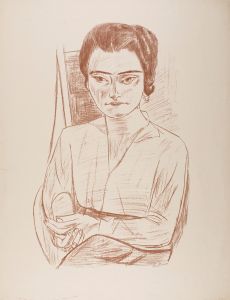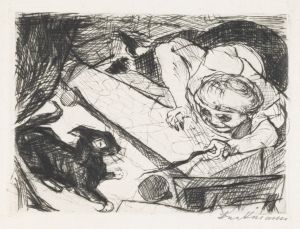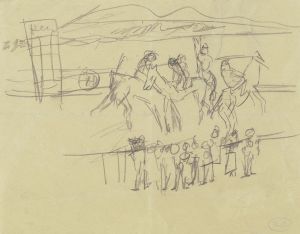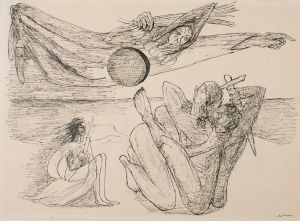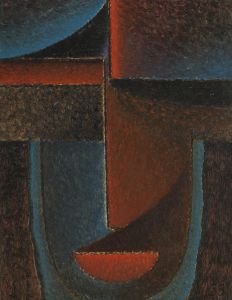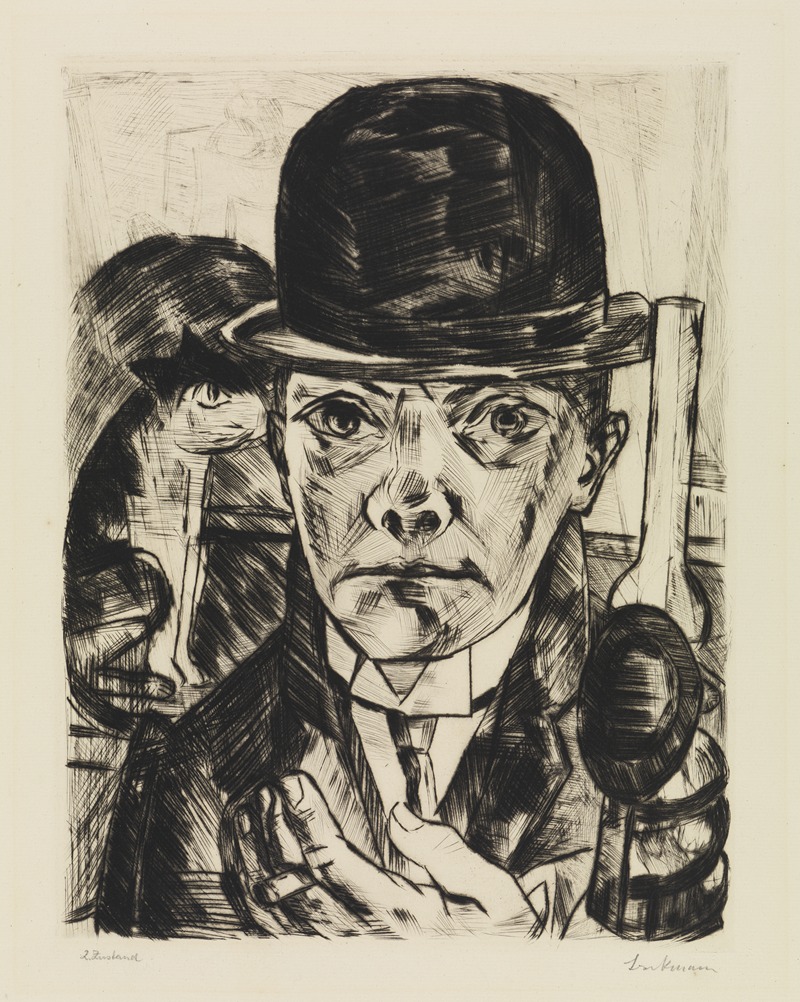
Selbstbildnis mit steifem Hut
A hand-painted replica of Max Beckmann’s masterpiece Selbstbildnis mit steifem Hut, meticulously crafted by professional artists to capture the true essence of the original. Each piece is created with museum-quality canvas and rare mineral pigments, carefully painted by experienced artists with delicate brushstrokes and rich, layered colors to perfectly recreate the texture of the original artwork. Unlike machine-printed reproductions, this hand-painted version brings the painting to life, infused with the artist’s emotions and skill in every stroke. Whether for personal collection or home decoration, it instantly elevates the artistic atmosphere of any space.
Max Beckmann's "Selbstbildnis mit steifem Hut" (Self-Portrait with Bowler Hat) is a notable work in the oeuvre of the German painter, who is recognized for his contributions to the New Objectivity movement. Painted in 1921, this self-portrait is a striking example of Beckmann's introspective and expressive style, which often delves into themes of identity, existential reflection, and the human condition.
Beckmann was born in Leipzig, Germany, in 1884, and his career spanned a period of significant social and political upheaval. His work is often associated with the New Objectivity (Neue Sachlichkeit), a movement that emerged in Germany in the 1920s as a reaction against the emotionalism of Expressionism. Artists of this movement sought to depict reality with a sober, unsentimental clarity, often highlighting the more unsettling aspects of modern life.
In "Selbstbildnis mit steifem Hut," Beckmann presents himself wearing a bowler hat, a common accessory of the time that adds a sense of formality and perhaps a touch of irony to the portrait. The bowler hat, often associated with the bourgeoisie, contrasts with Beckmann's intense gaze and the psychological depth conveyed in the painting. This juxtaposition might suggest a critique of societal norms or an exploration of the artist's own complex identity.
The composition of the painting is marked by Beckmann's characteristic use of bold lines and a limited color palette, which serve to emphasize the starkness and intensity of the self-portrait. The artist's face is rendered with a high degree of detail, capturing a sense of introspection and perhaps even confrontation. The background is relatively plain, ensuring that the viewer's focus remains on Beckmann's expression and the symbolic elements of the portrait.
Beckmann's self-portraits are often seen as a means of exploring his own psyche and the broader human experience. In this work, the artist's direct gaze engages the viewer, inviting them to consider the complexities of identity and self-perception. The painting reflects Beckmann's interest in the interplay between the individual and society, a theme that recurs throughout his body of work.
Throughout his career, Beckmann faced numerous challenges, including the rise of the Nazi regime, which labeled his work as "degenerate art." Despite these obstacles, he continued to produce art that was deeply personal and often critical of the world around him. His self-portraits, including "Selbstbildnis mit steifem Hut," remain powerful testaments to his resilience and artistic vision.
Today, Max Beckmann is celebrated as one of the most important artists of the 20th century, and his works are held in major collections around the world. "Selbstbildnis mit steifem Hut" is a significant piece within his oeuvre, offering insight into the artist's self-examination and his engagement with the cultural and social issues of his time.





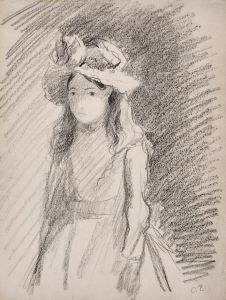
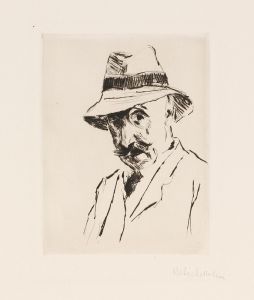
![Designs for theater with black-framed proscenium and boldly colored settings.] [Study for stage light wall decoration, possibly for Caf ̌Crillon ……](/imgs/249421/s/winold-reiss-designs-for-theater-with-blackframed-proscenium-and-boldly-colored-settings-study-for-stage-light-wall-decoration-possibly-for-caf-crillon--2b2d7011.jpg)
